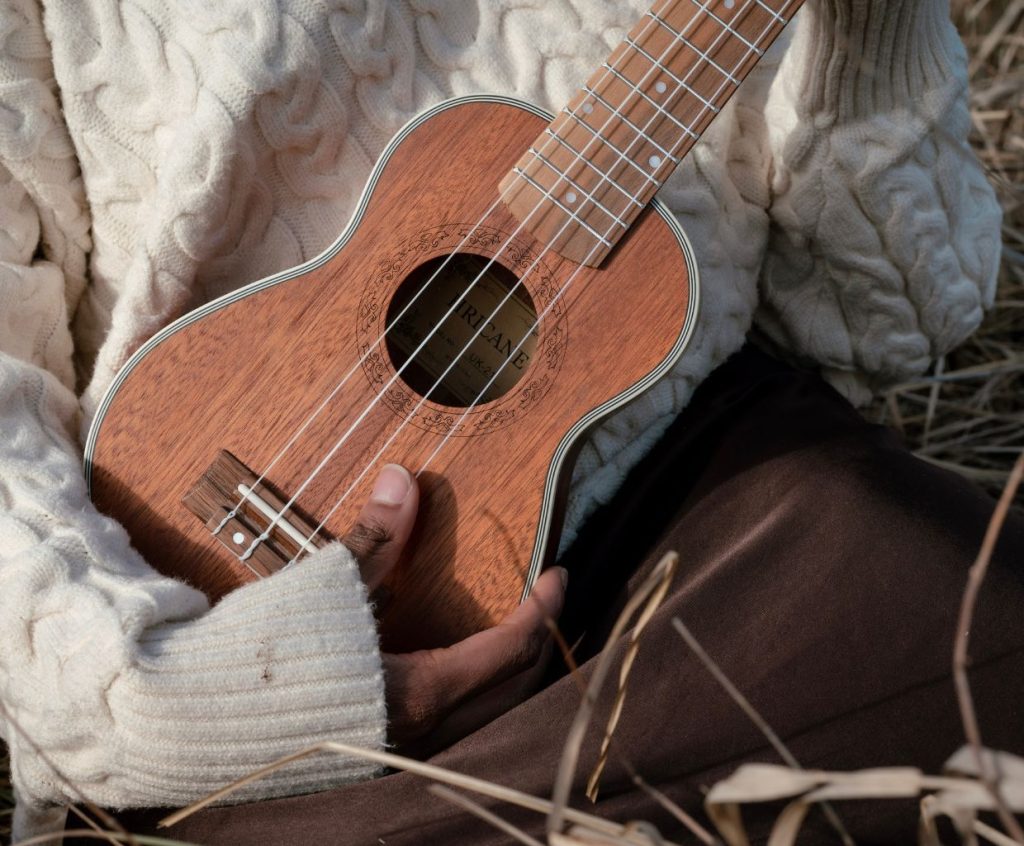Best Ukulele Tuner And How To Tune A Ukulele
What is the best ukulele tuner? I have been playing the ukulele for a good while now. As a result, I have used several tuners. I will tell you now that most of the tuners I have used are terrible. We are talking about tuners that are not accurate in the slightest. We are talking tuners that are just plain cumbersome to use. Using these tuners sucks the fun out of playing the instrument, as what you are playing will never sound as brilliant as it can.
So, I set out to find the best ukulele tuner out there, and I have found it. I’d like to introduce you to the best ukulele tuner on the market: Snark SN6 Clip-on Ukulele Tuner. We will briefly cover how to tune a ukulele with this and other similar tuners.
Table of Contents

I picked this one out of a friend’s bag because I had no tuner. I must say, when I first got my hands on it, I thought that it was a far more expensive tuner. I never anticipated that it was the same price as a couple of coffees.
This showed me that the best ukulele tuner out there may not even have been one of the most expensive. So, please don’t worry about the cost if you can because the Snark SN6 packs a punch.
While this is listed as a ukulele tuner, it can be used on several different instruments. We will come to why soon. So therefore, if you play ukuleles, guitars, or even violins, you may want to introduce this into your arsenal. It works wonderfully well for all of them.
Main issues with ukulele tuners
The main issue I have with some tuners out there is that they are not very accurate—clip-on tuners, like this one, work by sensing the vibrations on the headstock.
When it gets loud, it can cause small vibrations in the headstock. This can throw the tuner out of sync, meaning it will not be 100% accurate. This is where this tuner differs. Yes, it is a clip-on tuner and will sense vibrations, too (and it is accurate!), but if you wish, it also has a microphone built into it.
You can turn this microphone on at the flick of a switch. This means that it works well in live situations.
This microphone feature makes the best ukulele tuner great at working with other instruments. However, this is not the only reason. Most ukulele tuners on the market only register the notes GCEA. They do not need to do anything more than that. This one can check the tuning of all notes. This means that it can work well with all instruments.
Some of the best parts of this tuner
The design is fantastic too. One of my favorite features of this ukulele tuner is that the head of it can be rotated 360 degrees. This makes it easy to view. The tuner is lit brightly, so you can easily tune your instrument, even if it is a little bit dark.
The screen is a touch larger than some of the other tuners that I have worked with, and I must say that I love that! Some of the cheaper tuners on the market have smaller screens, making it tough to focus. You may even end up with the wrong tuning, which will never be good.
A real highlight of the design is the ‘padded’ clips. Many of the cheaper tuners on the market are not padded. This means that they can ruin the headstock of your ukulele. Of course, this will not be good if your instrument is expensive. The Snark does not do that. It is kind and gentle.
There are a couple of extra features thrown in for good measure. One of my favorites is the inclusion is the calibration buttons on the back. This is useful if you are trying to calibrate your ukulele to an instrument slightly out of tune, e.g., a piano. It makes it easier to accompany it.
I am very hard-pressed to find something wrong with the tuner. The only real issue is that the design may only be for some. However, even then, try to look beyond that. This is the best ukulele tuner that money can buy right now.
How to tune a ukulele
It is all well and good having the best guitar tuner around, but if you need to learn how to use it, it is pointless to own it. This means that you must learn how to tune a ukulele. The information in this section will go a long way toward helping you.
First, you’ll need to know what the pitch of your guitar is meant to be. You likely have a soprano or tenor ukulele. If that is the case, then the strings should be GCEA. Please conduct your research if you do not have a tenor or soprano instrument or are unsure. This is important when it comes to tuning your ukulele.
It is also essential to know how your tuning pegs work. All you should do is twist them. This will change the pitch. If your ukulele tuner says that your guitar is too low in pitch, then you will tighten them.
If it says that it is too high in pitch, then you will loosen them. This may sound like obvious information, but you must know it. This is because there are several people out there who will overtighten the strings on their guitars.
This leads to the string snapping. You do not want this. Strings snapping due to being overtightened tends to be most common on the highest-pitched strings on the ukulele, as they are a lot thinner.
Once you know that, it is essential that you know how to identify the strings. Again, I assume you have a tenor or a soprano ukulele here. I am also going to assume that you are playing the instrument right-handed.
The top string will be the G, then the C, then E, and finally the A. This is important as you will be tuning the instrument to these notes.
- Read Also: Best Baritone Ukulele
Ways to tune your ukulele
While there are several ways in which you can tune your ukulele, including:
- Tuning it to a piano
- Tuning fork
- Pitch pipe
- ‘By ear.’
The easiest and most efficient method for tuning your guitar is by using an electronic tuner. If you choose a quality tuner, like the one we discussed on this page, it will be far more accurate. This means you will end up with a ukulele that sounds great. If you have an electronic tuner, could you clip it to the instrument’s headstock and switch it on?
Now you can start to tune the individual strings. Start from the top and work your way down. Look at the electronic tuner to see how in tune you are. One of the following will happen:
- It will list your note and say that you are in tune. This happens when the needle is in the center of the tuner.
- If you list your note, the needle will be in the + or the -. If it is the plus, then loosen the strings. If it is in the negative, then tighten the strings.
- The note will be wrong. What you must do will be dependent on the note that is displayed. If the note displayed is a higher pitch than what you aim for, then down-tune until the correct note is displayed. If it is a lower pitch, then tune the ukulele up.
My conclusions
It is important to note that if you wish for your ukulele to be in tune, you must invest in the best ukulele tuner. There are far too many people out there who need better-quality tuners. There are even more people how there who need to put the research into how to tune a ukulele correctly.
If you are one of these people, your ukulele will sound abysmal. An instrument that is even slightly out of tune can hamper the playing experience. You will never be able to get the correct sound you want, which can often make you feel like you are not a brilliant player. Trust me, you probably are. You must ensure you get that ukulele into tune right at the start!
Read more:
- How to Tune a Ukulele – Wikihow
- Electronic tuner – Wikipedia



